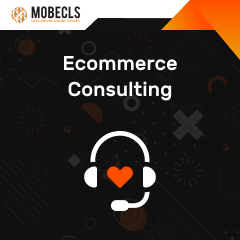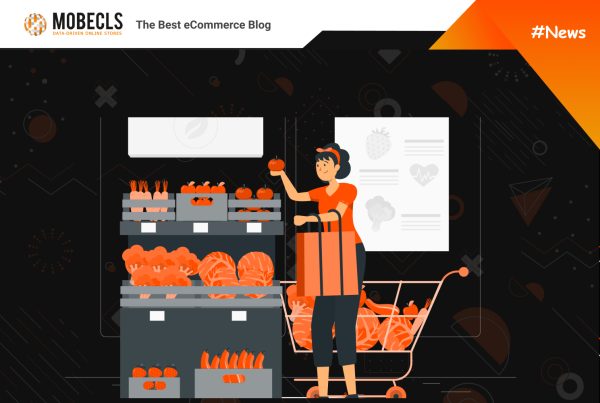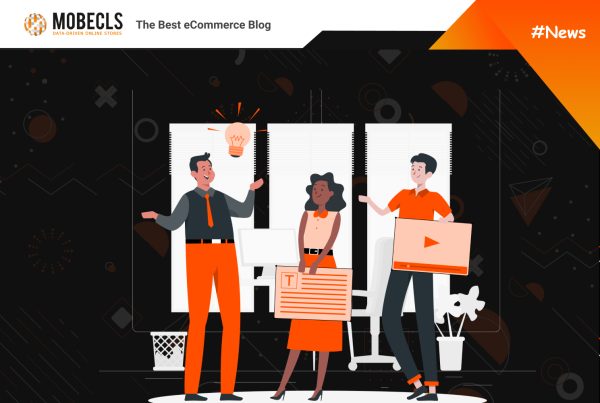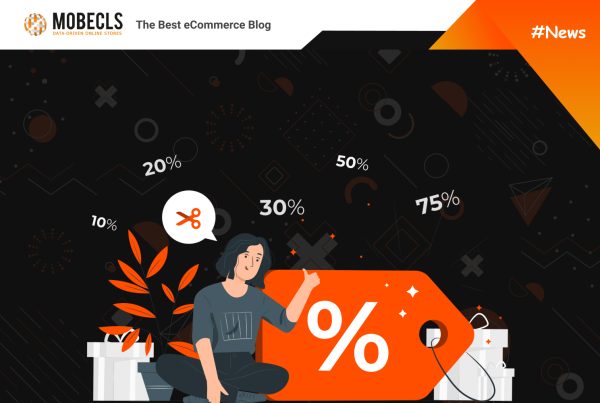Omnichannel is an approach to commerce that offers consumers a unified experience across all online and offline channels. It allows a customer to switch between channels easily and without friction. For example, it becomes possible to search for and buy a product online and then have it delivered to the nearest store, or receive it at home and return it to the store.
Faced with the new expectations of consumers, who want unique and consistent shopping experiences, and the growing risk of disruptive competition, retail brands must adapt to meet the challenges of tomorrow’s commerce.
Retailers are going through a complex period, but also a decisive one for their future. While eCommerce continues to expand and shows excellent results, the physical store remains the medium used for 80 to 90% of purchases.
In this context, adopting an omnichannel strategy is no longer a simple question of natural evolution, it becomes vital to hope to reconnect with satisfactory levels of profitability and growth.
What Is Omnichannel Retail?
Traditional retail was how businesses worked before eCommerce and smartphone apps irrevocably transformed the way people shop. A typical retailer has a physical store, maybe an online store, and social media accounts, but none of these channels successfully combine the experience they each provide. Consumers do not benefit from inventory transparency since they cannot adequately study items or engage with the merchant other than in-store, through email, direct message, or phone.
In summary, typical retail is not customer-centric and operates only during regular business hours.
Omnichannel retail, on the other hand, should allow customers to find, interact, search, buy, and receive post-purchase assistance through the channels they choose, in the order they prefer. They can do anything they want, whenever they want. When a passing consumer begins their purchasing process, they have several options for where to begin – they may interact with your organization at a moment that is convenient for them. The client is in control of omnichannel commerce. The merchant’s role is to discover natural methods for their customers’ channels to overlap and assist each other at every touchpoint.
How to Build an Omnichannel Strategy
Successful omnichannel retailers typically have one primary goal: to merge their brand’s digital and physical experiences into one cohesive experience for the consumer, regardless of which channels they use and in what order.
If you’re ready to take your business to omnichannel, here’s what to think about before you get started:
- What channels do your customers use?
- What is your business model?
- What type of point of sale system do you use?
- What kind of eCommerce software do you use?
Once you have your omnichannel model in place, you will need to market the added value for customers in each channel. Your goal is to increase the adoption of the various omni channel touch points you have in place.
Imagine you’re browsing Instagram and come across something that catches your eye — like a smartphone case that promises to protect your phone.
After reading the comments on the post, you click on the account profile and browse through several articles and tales. You’re ready to shop now that you’ve gathered all of your knowledge in one spot — and you can since the merchant utilizes Instagram Shopping. You don’t even need to exit the app.
Selling on social media is an excellent illustration of how retail and omnichannel marketing cross — and the benefits are obvious.
Customers may maintain control while being given additional alternatives through omnichannel marketing. Instead of depending on obtrusive advertisements, you convert product discovery into the start of a linked buying experience, making it easier for merchants to close a deal.
Omnichannel Retail Advantages
It takes a lot of time and effort to set up an omni-channel experience, but is it worth it? Here are some advantages of the omni-channel strategy.
- Customer satisfaction is higher
Consumers can utilize the channel they like if the correct channels are employed for the right target group. Furthermore, having a physical as well as an online presence provides your organization a “face” and builds consumer trust.
Customers have a stronger, more satisfying relationship with the brand as a result of this fluid experience, which should increase consumer loyalty. You should know by now that maintaining existing clients is always easier and less expensive (and hence more efficient!) than recruiting new consumers.
- Time-saving
Customers may bring their online purchases to the real store and return them there. In many circumstances, this saves the consumer time. If it’s more convenient or urgent, people can swap products in person and avoid having to wait for the replacement product to come.
This adaptability will promote customer happiness and can assist raise sales as foot traffic to your physical store grows. Aside from that, having in-store returns may be healthier for the environment.
- Better Conversion
Because the product information is distributed across many channels, buyers are more likely to purchase the product. Shoppers gain trust when they know they can buy a product through any channel and that they will get the same price no matter where they go.
Omnichannel Retail Disadvantages
To give you a clear overview of the omnichannel strategy, we should also look at a number of disadvantages that you have to take into account if you’re considering implementing this strategy at your company.
- You have to restructure your business
Implementing an omnichannel approach necessitates certain adjustments to your organizational structure.
Most businesses have both a traditional marketing department and an internet marketing department. Similarly, rather than the customer support staff, your mobile assistance may come from the development department.
It is common for these departments to operate independently of one another, causing the various channels to “stand-alone” (this would be a multi-channel experience and not omnichannel). A branding team that handles all physical and online branding and positioning would be a superior approach. In addition, a sales staff should be in charge of the client journey and the synchronization of the various channels. The drawback is that you must make space for it and devote time and money to it.
Bottom Line
As the customer receives a consistent message regardless of where they are, omnichannel retail marketing methods are more effective. Consider where your consumers regularly engage with you and how you may overlap those channels and touchpoints when developing an omnichannel marketing strategy. Advertisement retargeting is a prime example of multichannel marketing. If a consumer abandons their basket or looks at a specific product on your website, you may show them an ad for those same items on Facebook and Instagram.
Rather than appearing as a completely inappropriate advertisement, it reflects the customer’s interactions on another channel and corresponds to their interests.
 If you want to be ahead of your competitors and make sales, you need a solid online business strategy, which is vital for both eCommerce newcomers and already established businesses. If you have doubts about your eCommerce strategy or don’t have it, we’ll help you fix or create it.
If you want to be ahead of your competitors and make sales, you need a solid online business strategy, which is vital for both eCommerce newcomers and already established businesses. If you have doubts about your eCommerce strategy or don’t have it, we’ll help you fix or create it.




